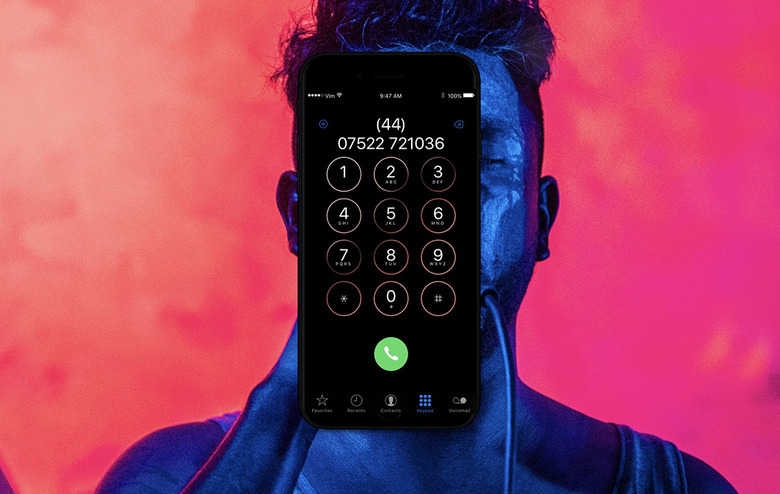Everything We Know About The iPhone 8
Try your best to contain yourselves, Apple fans... we're now exactly one week away from seeing Apple unveil its next-generation iPhone lineup. As anyone reading this surely already knows, Apple is expected to change up its iPhone release pattern yet again, launching not two but three different iPhone models this year. The company used to release just one flagship iPhone each year before switching to two in 2014. While it's true that there will be three new iPhone models unveiled at Apple's new campus next week on September 12th, there's really only one that everyone has been focusing on. That's right, we're talking about the iPhone 8, and in this post we'll run down everything we think we know — as well as everything we know we know — about Apple's upcoming tenth-anniversary iPhone.
Before we get to the iPhone 8, let's quickly run through what we can expect from the iPhone 7s and iPhone 7s Plus. And before we get to that, we should remind you that the names of all of these new iPhones have still not been confirmed. The phones everyone has been calling iPhone 7s and iPhone 7s Plus might actually launch as "iPhone 8" and "iPhone 8 Plus," and the handset we've been calling iPhone 8 might be the "iPhone Edition" or something else entirely.
With that out of the way, we'll go back to referring to them by the names everyone has been using. Apple's new iPhone 7s and iPhone 7s Plus are expected to be iterative updates of last year's iPhones, the 7 and 7 Plus. They'll be just like previous "S" generation phones for the most part, with big internal upgrades but no major redesign. There will be some significant hardware differences this time around, however, because the backs of the phones are expected to be glass in order to enable wireless charging support.
Apple will undoubtedly sell millions of iPhone 7s and iPhone 7s Plus models, but the iPhone 8 is the one that will have everyone buzzing.
The iPhone 8 will be Apple's first smartphone in three years to feature a new design. We'll remind you that the iPhone 7 and 7 Plus sport designs that were first introduced in 2014 on the iPhone 6 and 6 Plus, while the iPhone SE has a design that dates all the way back to 2012's iPhone 5.
Apple's iPhone 8 will feature a glass sandwich design with a stainless steel midframe. The edges of the phone's frame are expected to be polished, so the black iPhone 8 will look like it's made of one continuous sheet of glass — Jony Ive's dream. The back of the phone will feature a dual-lens camera that is vertically oriented instead of horizontally, and the front will look like no iPhone we've ever seen before.
The original iPhone's iconic home button didn't change until 2013, when the iPhone 5s did away with the icon that was always painted on. Apple ditched the icon because it needed a clear patch through the home button's sapphire crystal in order to scan fingerprints with its Touch ID sensor. With that in mind, it makes sense that the next big change to the iPhone's home button also comes along with a big change to Apple's Touch ID system.
In the iPhone 8, they're both going away.

Apple will eliminate the home button and its Touch ID fingerprint sensor on the iPhone 8 in order to offer a design with the best possible screen-to-body ratio. There is barely any bezel on the sides of the display or underneath it. The same design can be found at the top of the screen, though it's interrupted by a big notch containing the speaker, front-facing camera, and other sensors.
Speaking of the front-facing camera and other sensors, let's discuss what's inside the phone.
The iPhone 8 will be the first iPhone with an OLED display instead of an LCD screen, and a special new piece of hardware will be found above it. It'll be a special 3D sensing camera that enables lightning-fast authentication by way of facial recognition. This isn't like Samsung's facial recognition feature in the Galaxy Note 8, which took someone about 12 seconds to crack. This is next-generation tech that is expected to be extremely fast secure. The new feature could be called "Face ID," but that's just speculation.
Inside the iPhone 8, a new A11 processor will run the show. Yes, early benchmark test result leaks suggest that performance is off the charts.
In terms of other specs, we're looking at a 5.1-inch AMOLED display, dual 12-megapixel rear cameras, a 7-megapixel front-facing camera, 3GB of RAM, 64GB or 256GB of storage, and wireless charging support. Sadly, rumors suggest the iPhone 8 will only feature old, slower wireless charging technology rather than the newer "wireless fast charging" tech found on most flagship Android phones.
Now, on to the big questions: when will it be released and how much will it cost? Apple will unveil the iPhone 8 next week on September 12th, and preorders should open on September 15th at 3:00 AM ET / 12:00 AM PT. The iPhone 8 release date, however, is something of a mystery.
The iPhone 7s and iPhone 7s Plus will be released a well later on September 22nd, and there's a chance the iPhone 8 could launch in limited quantities on that date as well. There are also still rumors that the iPhone 8 will actually be released at a later date, likely in early October. In terms of pricing, we're looking at $999 for the 64GB model and $1,099 for the 256GB version. A few reports have said there may also be a 512GB model and if that's the case, we can expect it to ring up at $1,199. The iPhone 8 should come in black, silver, and a new darker gold.
